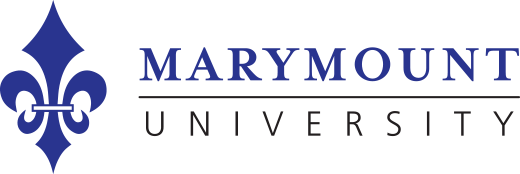5 Innovations in Higher Education Driven by Educational Leaders

Originally published April 4, 2022 and refreshed April 27, 2023.
The rapid changes in the cultural, political and environmental landscape in America and beyond require educational leaders who can respond quickly to meet the increasingly complex needs of their students. Today’s students and schools need innovative education professionals who center social justice issues when planning school curricula to ensure that the needs of students from historically marginalized communities are being met.
Many strong educational leaders are doing just that at colleges and universities nationwide. From addressing the financial concerns of students in socially conscious ways to designing programs with online students in mind, higher education faculty and administrators are leveraging their years of educational experience by harnessing the resources of the present for the good of the future.
Consider some recent innovations in higher education being driven by education leaders who are making a positive difference in the lives of students and the legacies of colleges and universities.
Complete The Form to Access Your Online Ed.D. Program Guide
The Role of Educational Leadership
To begin, consider the broader role of educational leadership in spurring innovation.
Educators who pursue leadership careers are tasked with connecting the needs of students to useful teaching methods and curricula. Ultimately, their goal is to empower students to achieve optimal academic outcomes by removing barriers to learning, such as high costs, ineffective learning processes, obsolete technologies or social deterrents.
Working in administrative positions within a college or university ecosystem, educational leaders might spearhead initiatives to:
- Design new learning procedures that advance academic outcomes
- Create classroom and campus environments that are healthier and more positive for students
- Implement strategies and solutions that help faculty members work more effectively
Educational leaders often play direct roles in brainstorming, iterating and executing innovations in higher education.
5 Innovations in Higher Education
The future of education is being written by a number of educational leaders harnessing advanced tools and technology to provide a superior academic experience to students across the world. Here are five notable breakthroughs in innovative higher education.
1. Hitting the Reset Button: Reimagining the University Business Model
Dr. Joe Sallustio, Executive Vice President and Chief Operating Officer at Claremont Lincoln University in Claremont, California, knew that the first thing he needed to do in the face of the COVID-19 pandemic was reducing the cost of tuition. He set out to restructure the university’s business model to accommodate higher education students who were skeptical of the education system at large, concerned about accruing debt and privy to a wide range of choices when it came to how they would spend their time after high school.
“A fierce leader has to make bold choices,” Sallustio said during the 2021 Fierce Leaders in Higher Ed virtual event. For Sallustio, that involved instituting a 21% reduction in all course fees. In addition, the university raised money to offer fellowships to students who work in public administration so that they could be part of shaping the American response to the COVID-19 pandemic.
The administration at Claremont Lincoln University also made strategic choices about hybrid education that prioritized safety, spending time well and remaining budget conscious. All of these initiatives helped Claremont Lincoln University build on its past legacy, make the most of its resources in the present and look toward the future for the sake of its students.
2. Birds of a Feather: Community Makes a Difference in the Lives of Students
Before the COVID-19 pandemic, studies showed that students who had preexisting friends on campus tended to earn higher grades and have higher rates of retention than those who did not. After the pandemic resulted in a few years of disconnection, infrequent contact with others and uncertainty about how to socialize safely, many higher education students are having difficulty making and sustaining on-campus social connections.
That’s why California University of Pennsylvania (Cal U) and Loyola University in New Orleans (Loyola) partnered with Nearpeer to offer their peer engagement app to students.
Both schools show a great deal of evidence that the app worked. Ninety-one percent of users made at least one peer connection. Relative to nonusers, 17% more students said they enjoy getting to know their university peers, and 12% more said they felt connected to their peers. Forty-one percent made at least one “real-life” friend through Nearpeer.
“Historically, students connected on campus through events and student organizations, but that is no longer the most effective way for them to meet,” wrote Dr. Nicole Barbaro, who wrote a report on Nearpeer at Loyola and Cal U. “This research shows that by leveraging technology, students can find more peers with common interests and hobbies to expand their social network on campus.”

3. How Can I Help You: Harnessing Artificial Intelligence and Machine Learning for Colleges and Universities
It used to be that any time a prospective or current student — even an alumnus who needed a transcript for a graduate program or information about an outstanding bill — had a question, they would have to reach out to a staff member at their college or university individually. They would stop by the staff member’s office, leave a voicemail or send an email, and then wait for a response until business hours and the staffer’s to-do list allowed it.
Things started to change a bit before the COVID-19 pandemic when colleges and universities began implementing chatbot technology. At California State University, Northridge (CSUN), the original chatbot was designed to communicate with first-year students, largely as a retention effort. But then the pandemic hit, and remote learning along with it.
CSUN, along with many other higher education institutions, opened the bot up to all students. The bot distributed pandemic-related information and conducted polls about returning in person or remaining remote. Elizabeth Adams, Associate Vice President of Graduate Studies, and her colleagues were pleasantly surprised by the results — a return rate of over 30%.
CSUN students sent over 42,000 messages to the bot in 2020. They received responses to their questions with a typical time lapse of just 10-15 seconds. When students express stress or other mental health concerns, the bot is configured to notify the university counselor or the campus police, depending on the severity of the keywords the bot observed.
4. Creating Pathways: Starting Postsecondary Education Early
Marymount University Online Doctorate of Education student Travis Zimmerman knows that part of innovation in higher education means discussing familiar topics in new ways. One of those topics is the age-old question: “Is college worth it?”
This question, Zimmerman says, is one “that parents and students frequently ask, so creating pathways for students to be successful in creating postsecondary plans and having the resilience to attain their goals is important so they don’t lose focus and drop out pre-completion, landing them with debt but no degree.”
Whether he is working at the high school level, at a think tank or policy foundation, or as an author, Zimmerman intends to make his mark on higher education through a range of contributions that empower students to make wise decisions about higher education according to their aspirations, goals and circumstances. One of those contributions, Zimmerman hopes, will be a book that describes various educational interventions, highlighting best practices in social-emotional learning and instruction.
Rather than promoting a standardized, one-size-fits-all message that encourages all students to experience higher education in the same, traditional way, Zimmerman and fellow innovative education leaders know that early conversations, critical thinking and inventive solutions are integral to empowering the student population to make sustainable postsecondary decisions.
5. Flipping the Script: Inverting the Classroom-Homework Structure
To improve academic outcomes, some professors are using what’s known as a “flipped classroom” model. What this means most basically is that instructors assign video lectures, lab simulations and readings, all of which are done independently and outside the classroom. As such, students do the bulk of their learning on their own time.
Then, when students reassemble in the classroom, they are already well-versed in the day’s subject matter, ready to have more meaningful and confident conversations about the material. Professors using the flipped classroom approach say that student engagement is skyrocketing.
Professor Bronwyn Bleakley of Stonehill College is one flipped classroom innovator. Prof. Bleakley says that by doing “the hard work of learning” in advance, students arrive for class discussions much better prepared to ask probing questions and to interact with the curriculum in a serious way.
Lead Innovative Higher Education Efforts
Do you find yourself thinking about the landscape of higher education today and want to be involved in bettering the future? Are you motivated by developing strategies for innovative higher education?
If the answer is yes, then the Online Ed.D. from Marymount University could be a good next step for growing in your career as an innovative leader in education, nonprofits, business, government, etc. Designed for working professionals, the Ed.D. program focuses on leadership and organization innovation, making it a perfect fit for those who want to create positive change in their work environments.
As a fully online and accredited program, the Ed.D. offers an accelerated cohort model and a high level of personalization. Courses that cover diverse, dynamic topics include:
- Theory, practice and reflection on leading an organization
- The intersection of ethical leadership and social justice
- Leading organizational change in transformative ways
All of the Ed.D. curriculum is built to empower leaders to make meaningful change. Earning your Ed.D. through Marymount University Online can help you inspire transformation in your career, your workplace and your community.
